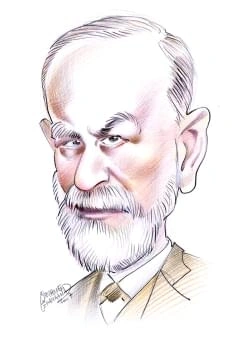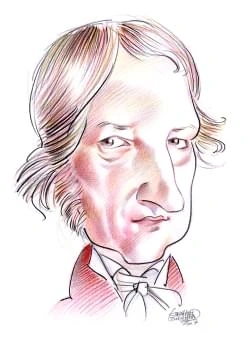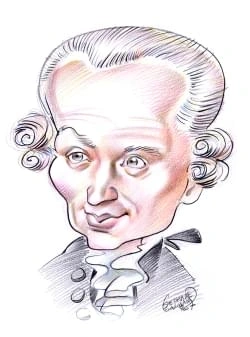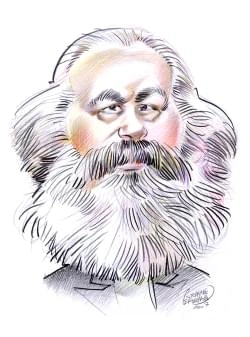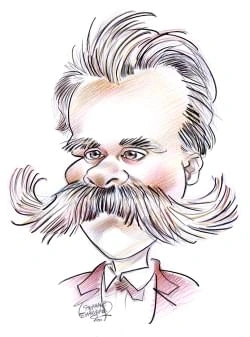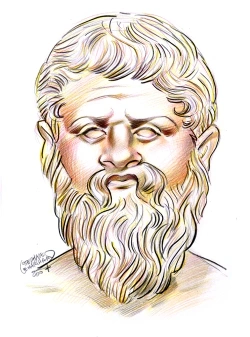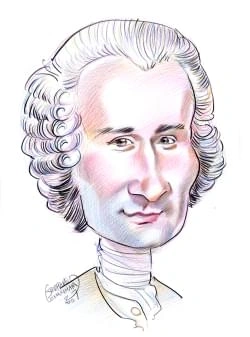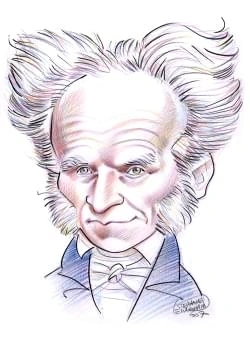289 résultats pour "body"
-
Turtle - biology.
Turtles use their jaws to cut and handle food. Instead of teeth, a turtle’s upper and lower jaws are covered by horny ridges, similar to a bird’s beak. Meat-eating turtlescommonly have knife-sharp ridges for slicing through their prey. Plant-eating turtles often have ridges with serrated edges that help them cut through tough plants.Turtles use their tongues in swallowing food, but unlike many other reptiles, such as chameleons, they cannot stick out their tongues to capture food. C Limb Structu...
-
Protein.
Myosin, the protein chiefly responsible for muscle contraction, combines with actin, another muscle protein, forming actomyosin, the different filaments of whichshorten, causing the contracting action. VI GLOBULAR PROTEINS Unlike fibrous proteins, globular proteins are spherical and highly soluble. They play a dynamic role in body metabolism. Examples are albumin, globulin, casein,hemoglobin, all of the enzymes, and protein hormones. The albumins and globulins are classes of soluble proteins a...
-
Elephant - biology.
B Trunk An elephant's nose and upper lip are combined in a long, limber trunk, an exceptionally supple appendage with an estimated 150,000 muscles. The versatile trunk actslike a hand for grasping low-growing shrubs and other food and placing it into the mouth; an arm for breaking off tree branches; or a snorkel for breathing when theelephant's body is submerged. Elephants also use their trunks to suck up water and squirt it into their mouths for drinking or over their bodies for bathing. Nostr...
-
Obesity.
of a day, contributing to the development of obesity. V TREATMENTS FOR OBESITY Obesity can become a chronic lifelong condition caused by overeating, physical inactivity, and even genetic makeup. No matter what the cause, however, obesity can beprevented or managed with a combination of diet, exercise, behavior modification, and in severe cases, weight-loss medications and surgery. A Diets The most common and conservative treatment for obesity utilizes a nutritionally balanced, low calorie diet...
-
Forensic Science.
barbiturates, cocaine, amphetamines, and heroin. When a body is discovered in a lake, stream, river, or ocean and the lungs are found to be filled with water, the medical examiner must determine if the drowningoccurred where the body was found or elsewhere. A standard microscope that can magnify objects to 1500 times their actual size is used to look for the presence orabsence of diatoms, single-celled algae that are found in all natural bodies of water. The absence of diatoms raises the possi...
-
Hormone.
women is called a follicle-stimulating hormone. When a follicle-stimulating hormone binds to an ovary cell, it stimulates the enzymes needed for the synthesis ofestradiol, a female sex hormone. Another gonadotropin called luteinizing hormone regulates the production of eggs in women and the production of the male sexhormone testosterone. Produced in the male gonads, or testes, testosterone regulates changes to the male body during puberty, influences sexual behavior, and playsa role in growth. T...
-
Dance
I
INTRODUCTION
Dance
Archive Films/BBC Worldwide Americas, Inc.
features in its dance styles. The ordinary potential of the body can be expanded in dance, usually through long periods of specialized training. In ballet, for example, the dancer exercises to rotate,or turn out, the legs at the hips, making it possible to lift the leg high in an arabesque. In India, some dancers learn to choreograph their eyeballs and eyebrows.Costuming can extend the body's capabilities. Toe or pointe shoes, stilts, and flying harnesses are a few of the artificial aids employe...
-
Bat - biology.
tomb bat has rather small ears. The shapes of bat ears are extremely varied. The wide ears of the Australian false vampire bat meet above the head and are fused.Many bats are able to turn their ears in the direction of faint noises. Bat hearing and its use in echolocation are highly developed. Some bats have large, conspicuous eyes, while others may have small beady eyes. This variation suggests that vision plays different roles in the lives of various species.Despite the familiar expression, 'b...
-
-
Diving (underwater).
compensator (or control) device (BCD or BC), which the diver wears as a vest. By adding air to the BCD, the diver becomes more buoyant and rises. By releasing air,the diver becomes less buoyant and sinks. With minor adjustments of air, the diver can achieve neutral buoyancy. A third hose attaches to pressure gauges that diversuse to monitor how much air remains in the tank. A fourth hose attaches to a backup breathing device called an alternate air source, or octopus. Divers also wear a belt w...
-
Achilles
I
INTRODUCTION
Thetis Dipping Achilles in the Styx
The sea nymph Thetis is seen dipping her son Achilles in the River Styx to make him immortal.
Priam Reclaims the Body of HectorThe relief sculpture on this ancient Roman sarcophagus, discovered in northwestern Greece, depicts an event fromHomer’s epic poem the Iliad. In this scene Priam, the king of Troy, reclaims the body of his son, Hector, from the Greekwarrior Achilles, who has killed Hector in battle. Hector’s recumbent body is seen in front of a chariot.Chris Hellier/Corbis Achilles fought many battles during the Greeks’ ten-year siege of Troy. When the Mycenaean king Agamemnon sei...
-
Metabolism (chemistry) - biology.
nearly perfect balance. Although much remains to be revealed about metabolic processes, biochemists now agree that regulatory, or rate-limiting, enzymes figure largely in the reactionsinvolved ( see Enzyme). Affecting metabolic pathways at the earliest steps, each enzyme molecule has a specific, or active, site that matches, or “fits,” its particular substrate—the compound with which the enzyme forms a product. The precision with which rate-limiting enzymes and substrates join to set off a parti...
-
Exercise.
broad, and most studies suggest a positive relationship between physical fitness and mental achievement. The relationship between regular aerobic exercise and cardiovascular health and longevity is well established. Regular exercise leads to a reduction in the risk ofcoronary heart disease, in which fatty deposits (plaque) form in blood vessels supplying the muscular wall of the heart, compromising oxygen delivery to the heartmuscle. In addition, with regular exercise the efficiency of the heart...
-
Dog.
I
INTRODUCTION
Dog, mammal generally considered to be the first domesticated animal.
French word for butterfly because it has ears that resemble butterfly wings, is a happy, friendly dog, suitable for small living spaces. The final dog group, nonsporting ,includes a wide variety of purebreds that differ in size, coat, overall appearance, and personality, from the shorthaired spotted dalmatian to the curly-haired poodle. V DOG BEHAVIOR Instinctive behaviors of the domestic dog are comparable to those of its wild relatives, the wolf, coyote, fox, and jackal. Unlike trained behavi...
-
Dog - biology.
French word for butterfly because it has ears that resemble butterfly wings, is a happy, friendly dog, suitable for small living spaces. The final dog group, nonsporting ,includes a wide variety of purebreds that differ in size, coat, overall appearance, and personality, from the shorthaired spotted dalmatian to the curly-haired poodle. V DOG BEHAVIOR Instinctive behaviors of the domestic dog are comparable to those of its wild relatives, the wolf, coyote, fox, and jackal. Unlike trained behavi...
-
Saturn - astronomy.
measurements of the magnetic field made by the Voyager space probes in the 1980s. Additional Cassini findings reported in March 2007 suggested that particles originating from geysers on the moon Enceladus may provide a partial explanation for thechange. The neutral gas particles become electrically charged and are captured by Saturn’s magnetic field, forming a disk of hot, ionized gas around the planet’sequator. The charged particles interact with the magnetic field and slow down the rotation of...
-
Star (astronomy) - astronomy.
absorbing the missing colors of light. For example, the set of dark lines made by hydrogen includes a dark red line, the set of dark lines made by sodium includes a pairof dark yellow lines, and the set of dark lines made by iron includes lines of nearly every color. Each element in the gaseous outer layer of a star produces its ownparticular pattern of dark spectrum lines, depending on the temperature and pressure of the gas. Astronomers have observed spectrum lines, or spectra, for hundredsof...
-
-
Leukemia.
leukemia, and normal or mildly decreased in chronic lymphocytic leukemia. Nearly all chronic leukemia patients have increased white cell counts. In chronic myelocyticleukemia, some of these leukemic white cells are capable of functioning as normal cells do by fighting infectious microbes. Hence, infection is no more common than in ahealthy individual. In chronic lymphocytic leukemia the blood contains large numbers of malignant lymphocytes that do not function normally. Normal lymphocytescoexist...
-
Tennis.
and interpret rules. The head official on the court, called the chair umpire, sits on a tall chair at one end of the net. A varying number of line judges sit around the courtbeyond the path of the players. Line judges determine whether serves and shots are good or out. A net-cord judge may be employed to determine when a ball touchesthe top of the net, and a foot-fault judge may watch for that specific infraction. In the 1980s electronic devices began to be used in some professional tournaments...
-
Heart.
situation. A Cardiac Cycle Although the right and left halves of the heart are separate, they both contract in unison, producing a single heartbeat. The sequence of events from the beginning ofone heartbeat to the beginning of the next is called the cardiac cycle. The cardiac cycle has two phases: diastole, when the heart’s chambers are relaxed, and systole,when the chambers contract to move blood. During the systolic phase, the atria contract first, followed by contraction of the ventricles. T...
-
Invertebrate - biology.
animals with a five-pointed design. They live in the sea and move with the help of tiny fluid-filled feet—another feature found nowhere else in the animal world. Zoologists recognize several different groups of worms. The phylum known as flatworms contains the simplest animals possessing heads. Nerves and sense organs areconcentrated in the head. Most flatworms are paper-thin and live in a variety of wet or damp habitats, including the digestive systems of other animals. Roundwormsrepresent anot...
-
Invertebrate - biology.
animals with a five-pointed design. They live in the sea and move with the help of tiny fluid-filled feet—another feature found nowhere else in the animal world. Zoologists recognize several different groups of worms. The phylum known as flatworms contains the simplest animals possessing heads. Nerves and sense organs areconcentrated in the head. Most flatworms are paper-thin and live in a variety of wet or damp habitats, including the digestive systems of other animals. Roundwormsrepresent anot...
-
Digestive System.
The stomach, located in the upper abdomen just below the diaphragm, is a saclike structure with strong, muscular walls. The stomach can expand significantly to storeall the food from a meal for both mechanical and chemical processing. The stomach contracts about three times per minute, churning the food and mixing it with gastricjuice. This fluid, secreted by thousands of gastric glands in the lining of the stomach, consists of water, hydrochloric acid, an enzyme called pepsin, and mucin (the...
-
Human Disease.
disease can be transmitted through food infected with mutated proteins. B Spread of Infectious Disease Some pathogens are spread from one person to another by direct contact. They leave the first person through body openings, mucous membranes, and skin wounds,and they enter the second person through similar channels. For example, the viruses that cause respiratory diseases such as influenza and the common cold are spreadin moisture droplets when an infected person coughs or sneezes. A hand that...
-
Animal - biology.
Vertebrates are customarily divided into cold-blooded and warm-blooded animals, but these labels are not very precise. Biologists normally use the terms ectoderm and endoderm to describe temperature regulation more accurately. An ectoderm is an animal whose temperature is dictated by its surroundings, while an endoderm is one that keeps its body at a constant warm temperature by generating internal heat. Reptiles, amphibians, and fish are ectoderms. Although they do not maintain a constant wa...
-
-
Whale - biology.
III BEHAVIOR OF WHALES Studies of whales in captivity have taught scientists much about the complex social behavior of whales. Since the late 1980s, advances in the use of satellite trackingsystems have also broadened opportunities for scientists to observe how whales behave in the wild. A Swimming and Diving Whales swim by making powerful up-and-down movements of the tail flukes, which provide thrust. The power comes from body muscles that flex the lower spine upand down in a wavelike motion...
-
Diseases of Animals.
infected animal. It may also spread in milk or in garbage that contains contaminated meat. Typical symptoms include blisters that appear on the mouth and feet;animals may become lame when their hooves degenerate. Canine distemper is a highly contagious disease caused by the paramyxovirus, which is transmitted in discharges from the nose and eyes. Symptoms begin with fever,malaise, and nasal and ocular discharges and may progress to convulsions and other nervous system disorders. Parvoviruses aff...
-
Orthodox Church.
formally defined by an ecumenical council, as it was in Catholicism, some Orthodox theologians have taught that the act of becoming a monk or the service of burial canalso be sacraments. The sacramental practice of the Orthodox differs in many details from Western customs. Baptism is administered by immersing the child or adult three times under thewater, each time in the name of one of the persons of the Trinity. It is followed immediately by anointment with chrism, a sacred perfumed oil that r...
-
Aerospace Medicine - astronomy.
medically as aeroembolism and popularly as the bends, leads to confusion, paralysis, or neurocirculatory collapse. The most characteristic symptoms of the bends arepain in the large joints resulting from pressure of the gas on tendons and nerves, together with spasm of the blood vessels. Preflight inhalation of pure oxygen toeliminate nitrogen from the system has proved valuable as a preventive measure. Rapid decompression, resulting from accidental failure at high altitudes of thepressure withi...
-
Asteroid - astronomy.
Asteroids of the S type, related to the stony iron meteorites, make up about 15 percent of the total population of asteroids that can be seen from Earth. Much rarer arethe M-type objects, corresponding in composition to the meteorites known as “irons.” These objects are made up of an iron-nickel alloy and may represent the cores ofbodies that were large enough to differentiate into layers and to melt deep inside. Their rocky outer layers may have been removed by impacts with other asteroids . A...
-
Boxing.
C Offensive Techniques To be effective, boxers must have an assortment of punches that are coordinated with their footwork. Less powerful punches often serve the important role of settingup the fighter’s chief “weapons,” as boxing analysts sometimes call a boxer’s main offensive skills. C1 Feinting Moving the hands or head to confuse an opponent is called feinting. A smart boxer will first test the opponent by trying different feints, noting the reaction to each onebefore deciding which will b...
-
Dog Family - biology.
muzzles, long and bushy tails, and large ears. Many foxes hunt by stalking prey and then leaping on it with a distinctive, stiff-legged pounce. Once thought to besolitary animals, foxes are now known to live in groups of up to six individuals. The remaining canids are each highly distinctive. Raccoon dogs and bush dogs are the least doglike canids in appearance. Raccoon dogs, found in eastern Asia, havestubby legs, a stout body, short ears, shaggy fur, and a black face mask that resembles a racc...
-
Penguin - biology.
B Parents and Offspring Once female penguins lay their eggs, both the parents incubate the eggs. The incubation period varies according to species, ranging from 33 days for the little penguinto about 63 days for the emperor penguin. In most medium-sized penguins incubation takes 35 to 38 days. The incubation routine is highly variable among penguinspecies, although in general both sexes participate in incubation and feeding of young. Male and female Adélie penguins take turns incubating their e...
-
-
Aristotle
I
INTRODUCTION
Aristotle (384-322
BC),
Greek philosopher and scientist, who shares with Plato and Socrates the distinction of being the most famous of ancient philosophers.
succession of individuals. These processes are therefore intermediate between the changeless circles of the heavens and the simple linear movements of the terrestrialelements. The species form a scale from simple (worms and flies at the bottom) to complex (human beings at the top), but evolution is not possible. C Aristotelian Psychology For Aristotle, psychology was a study of the soul. Insisting that form (the essence, or unchanging characteristic element in an object) and matter (the commonu...
-
Aristotle.
succession of individuals. These processes are therefore intermediate between the changeless circles of the heavens and the simple linear movements of the terrestrialelements. The species form a scale from simple (worms and flies at the bottom) to complex (human beings at the top), but evolution is not possible. C Aristotelian Psychology For Aristotle, psychology was a study of the soul. Insisting that form (the essence, or unchanging characteristic element in an object) and matter (the commonu...
-
Vanuatu - country.
and Luganville. V GOVERNMENT Vanuatu is governed under a constitution that came into effect with the republic’s independence in 1980. The president of Vanuatu serves as head of state, a largelyceremonial office. The president is elected by Vanuatu’s parliament and the heads of regional government councils. The parliament, or legislature, is a single-chamberbody whose membership has increased several times since independence; in 1998 the parliament had 52 members. Members of parliament are chose...
-
Bill of Rights.
accused has the right to “confront”—that is, to cross-examine witnesses who testify against him or her at trial. Those accused also have a right to subpoena (compel)supporting witnesses to testify in court and to have a lawyer assist in their legal defense. G Seventh Amendment In Suits at common law, where the value in controversy shall exceed twenty dollars, the right of trial by jury shall be preserved, and no fact tried by a jury, shall beotherwise re-examined in any Court of the United Stat...
-
Bill of Rights - U.
accused has the right to “confront”—that is, to cross-examine witnesses who testify against him or her at trial. Those accused also have a right to subpoena (compel)supporting witnesses to testify in court and to have a lawyer assist in their legal defense. G Seventh Amendment In Suits at common law, where the value in controversy shall exceed twenty dollars, the right of trial by jury shall be preserved, and no fact tried by a jury, shall beotherwise re-examined in any Court of the United Stat...
-
Virus (life science) - biology.
RNA into DNA earned them their name because this process is the reverse of the usual transfer of genetic information, from DNA to RNA.) The DNA form of theretrovirus genome is then integrated into the cellular DNA and is referred to as the provirus. The viral genome is replicated every time the host cell replicates its DNA and is thus passed on to daughter cells. Hepatitis B virus can also transcribe RNA to DNA, but this virus packages the DNA version of its genome into virus particles. Unlike...
-
Le message humain dans les performances du body art
remet en question le prêt à penser : «L’art qui m’intéresse doit bousculer nos a priori, bouleverser nos pensées, il est hors normes, il est hors-la-loi 6». Elle mène son action féministe contre les standards de beauté qui s'inscrivent particulièrement dans les chairs de femmes. Elle interroge les techniques de la médecine et des manipulations génétiques qui modifient le statut du corps et posent des problèmes éthiques 7.Zhichao surmonte la douleur et la présente en public pour supprimer son t...
- GOD, MIND, AND BODY - DESCARTES
-
-
Liver.
by bacterial infections. But hepatitis is most often caused by one of several viruses. The hepatitis A virus (HAV) can produce flulike symptoms and jaundice, but manypeople who contract it have no symptoms. The disease tends to resolve on its own. Because HAV lives in feces in the intestinal tract, hepatitis A is prevalent in areaswhere drinking water is contaminated with raw sewage. Good hygiene practices and a hepatitis A vaccination are effective measures of prevention. Hepatitis B is a more...
-
Bone (anatomy).
Infections of bones called osteomyelitis usually are caused by bacteria, especially Staphylococcus , which enters the body through open wounds and may destroy bone tissues. Tumors, or abnormal growths, occur in bone tissue, though most are benign. Cancerous tumors can be caused by excessive radiation; many radioactivesubstances have an affinity for bone, particularly the marrow, and are readily stored there. Most cancerous tumors in bones, however, are tumors that spread fromcancer in other par...
-
Ear.
I
INTRODUCTION
Ear, organ of hearing and balance. Only vertebrates, or animals
line or rotates in any direction. Each canal also contains sensory areas with sensory hair cells that project into a cone-shaped cap of gelatin. Two of the semicircularcanals are in a vertical position and are used to detect vertical movement, such as jumping or falling. The third canal is horizontal and detects horizontal movement,such as turning or spinning. The action of the canals depends on the inertia of the fluid inside. When the motion of the body changes, the fluid lags behind, causing...
-
Diving (sport).
water that creates a larger, more noticeable splash after the diver’s body displaces water under the surface. To minimize this upjet, top-level divers make a quickswimming motion by releasing their hands and collapsing their arms as they submerge. Instead of a large splash, the surface of the water appears to boil as the airbubbles rise from the diver’s entry. For feetfirst entries, which are rare in top-level competitions, divers place their legs and feet together while pointing their toes down...
-
Race - biology.
distributed as a cline, generally varying along a north-south line. Skin color is lightest in northern Europeans, especially in those who live around the Baltic Sea, andbecomes gradually darker as one moves toward southern Europe, the Mediterranean, the Middle East, and into northern Africa and northern subtropical Africa. Skin isdarkest in people who live in the tropical regions of Africa. The lack of clear-cut discontinuities makes any racial boundary based on skin color totally arbitrary. Sim...
-
Pottery
I
INTRODUCTION
Pottery, clay that is chemically altered and permanently hardened by firing in a kiln.
basket, or a clay or plaster form. Liquid clay can be poured into plaster molds. A pot can be coil built: Clay is rolled between the palms of the hands and extended intolong coils, a coil is formed into a ring, and the pot is built up by superimposing rings. Also, a ball of clay can be pinched into the desired shape. The most sophisticatedpottery-making technique is wheel throwing. The potter's wheel, invented in the 4th millennium BC, is a flat disk that revolves horizontally on a pivot. Both...
-
Sailing.
the sails sweep across the decks of the vessel from one side to the other, and also because of the danger of breaking spars. In wild jibing, control can be lostmomentarily and, if the seas are high, a small boat can broach —that is, veer on its side with danger of swamping or capsizing. An unintentional jibe in a heavy wind frequently has enough force to break the masts of a vessel. When jibing intentionally, careful sailors always haul in on the boom while turning, so that the boom willtravel...
-
Acquired Immunodeficiency Syndrome.
child transmission is particularly prevalent in Africa. D Misperceptions About HIV Transmission The routes of HIV transmission are well documented by scientists, but health officials continually grapple with people’s unfounded fears concerning the potential for HIVtransmission by other means. HIV differs from other infectious viruses in that it dies quickly if exposed to the environment. No evidence has linked HIV transmission tocasual contact with an infected person, such as a handshake, huggi...
-
-
Basketball.
rebound. Play continues as the teams score and possession changes. A time-out, when the game is stopped for a certain amount of time, allows coaches to instructplayers or to develop a new game strategy. A Offense Playing offense is perhaps the most prominent part of playing basketball, as it allows players to demonstrate and improve upon individual skills necessary to beingsuccessful. Many of basketball's best players have exceptional talents on offense. Basic offensive skills are passing, ball...
-
Aging - biology.
Different theories have been proposed to explain how SF works. One theory is based on the assumption that aging, and diseases that occur more frequently withadvancing age, are caused by structural damage to cells. This damage accumulates in tiny amounts each time the cell divides, eventually preventing the cell fromcarrying out normal functions. One cause of this damage may be free radicals, which are chemical compounds found in the environment and also generated by normal chemical reactions in...
}})
